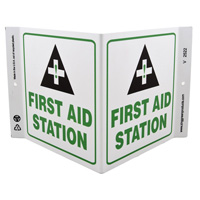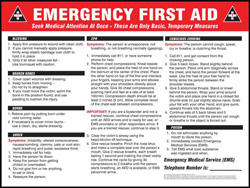| The Home page of ILPI's Safety Data Sheet (SDS) Resource, the leader in SDS information since 1995! | |
| The history and philosophy behind this resource. | |
| A curated collection of books and reference materials concerning Safety Data Sheets and closely related topics. | |
| Paste your plain text SDS into the SDS-Demystifier, and it will be converted into a hypertext-enriched document with links to detailed explanations of each key term. | |
| An extensive list of frequently asked questions about Safety Data Sheets including regulations, content, compliance, and more. | |
| A humorous take on Safety Data Sheet jargon. Fill in the blanks on our entry form to generate a personalized Unsafety Data Sheet to share with your coworkers. | |
| Since 1995, we've maintained this massive curated list of the best places to find Safety Data Sheets on the Internet. | |
| You are here! Way more than a glossary, this hypertext-enhanced resource covers hundreds of SDS-related terms and expert knowledge. Each entry includes both the SDS relevance and links to additional authoritative resources. | |
| Archived results of Safety Data Sheet related polls taken by some of our millions of site visitors | |
| The OSHA regulations behind SDS regulations, including the inspection guidelines and over 400 official interpretations letters under the Hazard Communication Standard | |
| Commercial suppliers of SDS authoring and management software as well as cloud compliance services. | |
| Commercial companies that will create SDS's for your specific needs as well as SDS translation companies. |

Safety signs, banners, and scoreboards? Get yours at Safety Emporium!

We have all kinds of safety wall signs at Safety Emporium.
Definition
- Cyanosis (noun) is an abnormal bluish color of the skin or mucous membranes.
- Cyanotic is an adjective used to describe this discoloration.
The bluish (cyan) or blue-gray color arises from deoxygenated hemoglobin, the oxygen carrier in your bloodstream that carries oxygen from your lungs to your tissues. Hemoglobin and your blood are red when well-oxygenated, but blood appears to be dark red-blue if there is more than 50 g/L of hemoglobin without oxygen.
Additional Information
Cyanosis can be seen in cases of anoxia and hypoxia (lack of oxygen) and is a symptom of asphyxiation. Medical conditions that involve diminished transport of oxygen in the body (heart disease, emphysema, pulmonary embolism, hypothermia etc.) can also cause cyanosis.
Cyanosis is also observed when a chemical agent blocks the ability of hemoglobin to bind oxygen. For example, carbon monoxide, CO, a product of incomplete combustion, binds to hemoglobin approximately 200 times better than oxygen. Victims of carbon monoxide poisoning often have blue lips and fingernails.
Treatment for cyanosis includes administration of pure oxygen. In the case of carbon monoxide poisoning, hyperbaric oxygen treatment, placing the victim in a chamber pressurized to 2 or 3 atmospheres of pure oxygen, may be used.
Cyanosis is harder to observe in dark-skinned people. The best places to look in this case are in the buccal mucosa (inside of the cheek) and hard palate (roof of the mouth).
Cyanosis gets its name from the color cyan, which is a greenish blue, not from the symptoms of cyanide poisoning. While cyanide poisoning does interfere with the body's handling of oxygen, its mechanism of action involves cytochrome oxidase rather than hemoglobin.
SDS Relevance
Cyanosis typically appears as a symptom of exposure or sign to watch for in sections Section 4 (first-aid measures) as well as Section 11 (toxicological information) of relevant Safety Data Sheets.
Cyanosis is an early sign of hypoxia. If you are working in a confined space where the oxygen content may be less than normal or are working with a chemical substance that interferes with oxygen transport in the body, be sure to recognize the bluish cast of cyanosis.
When working with substances that can cause cyanosis, be sure that all workers are properly trained and that appropriate first aid is available.
Further Reading

We have all kinds of first aid signs, posters and labels at Safety Emporium.
- Blue discoloration of the skin at the NIH's US National Library of Medicine's MedLinePlus.
- Cyanosis at the Merck Manual Consumer version.
- Peripheral Cyanosis (Blue Hands and Feet) at Healthline.
- Cyanosis at the NIH's StatPearls, a technical reference w/ PubMed references.
- Hypoxia and Cyanosis a short video course at Medskl.
- Cyanosis from The American Journal of Medicine, Vol 126, No 3, March 2013.
- Cyanosis in Infants and Children at Cincinnati Children's Hospital Medical Center.
- Peripheral cyanosis: Causes of blue hands and feet.
See also: anoxia, asphyxiant, cyanide, hypoxia.